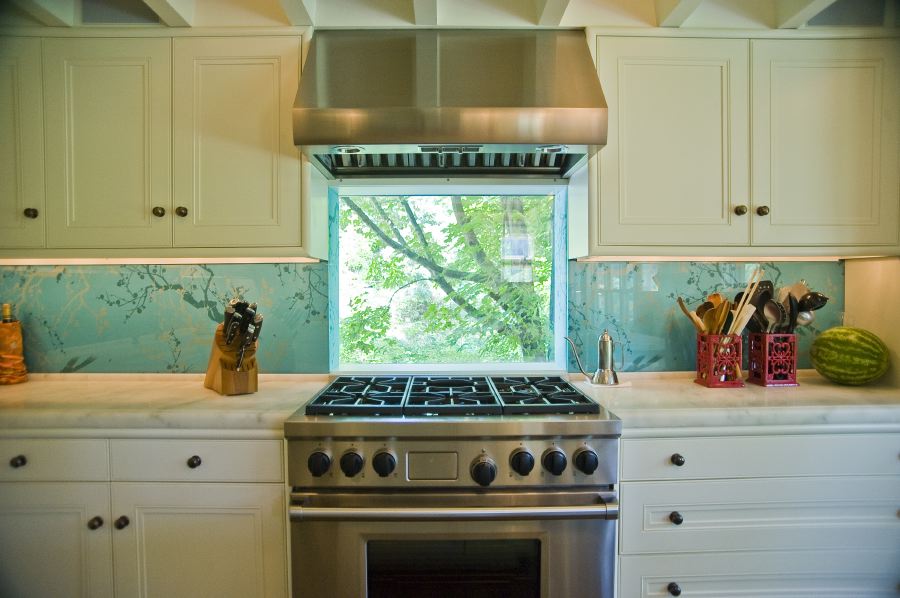Since the early 1990s, some of our best interior design decisions have involved using upholstery fabric for the walls, using a variety of textiles to create beautiful rooms with acoustic benefits. Although wall upholstery is quite economical to install, it’s a less common design technique that makes a big impact. We love it, and so do our clients.
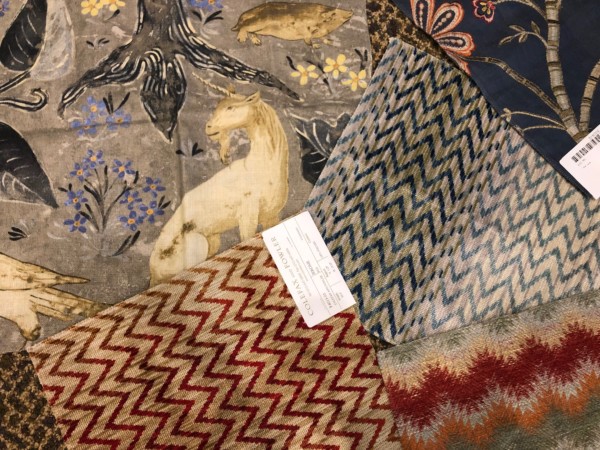
Imagine fabric for your walls.
I first upholstered a master bedroom in an Italianate Victorian cottage of my own, with a mushroom-colored, upholstery weight cotton velvet. At the time, the traditional method of applying upholstery to walls involved staples and double-welt trim. Since then we’ve upholstered walls in a number of impressive residential projects, a retail space (Linen) and in all of the guest rooms at Canyon Ranch spa resort in Lenox, Mass.
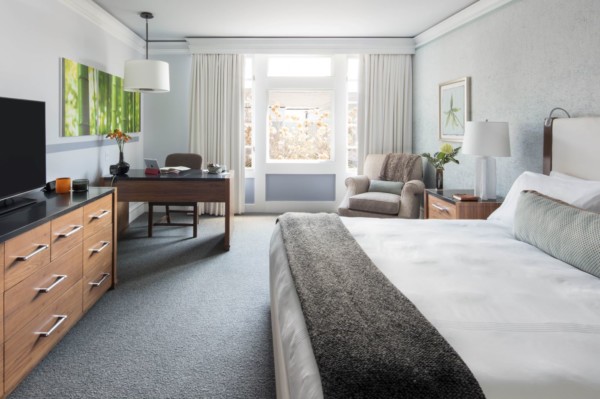
In a Canyon Ranch Lenox guest room, upholstered walls bring a hush and intimacy to the room.
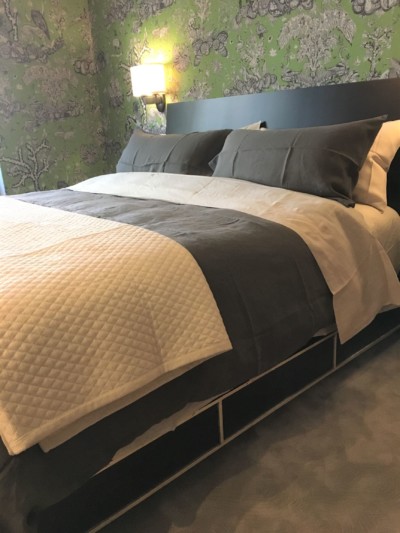
Our wall upholstery in a Central Park West residence.
Over the years, team member Ryan Laverdiere has helped us graduate to an upholstery installation method that uses no staples or trim. It’s called the “clean edge” technique. A recent project of ours on Central Park West, and a bedroom in Pittsfield, Mass., are spectacular examples.
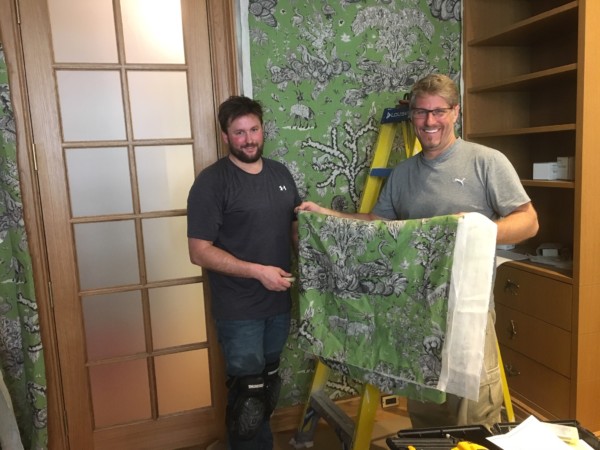
Ryan and Eric at work.
For our Central Park West project, we teamed up with a master craftsmen to hone our wall-covering expertise: Eric Thoman of V.E. Thoman is haut de gamme: a foremost expert in the trade, trained in France and now based in Austin. Eric, with his wife and business partner Veronique, is a true professional in skill, experience, with exciting stories to tell. We enjoyed a lively dinner together on the upper west side while hearing stories about his projects for the King of Morocco and other clientele. His work is also in place at the Château de Versailles, Château de Fontainebleau, in residences of the Saudi royal family and other high-end homes and commercial settings.
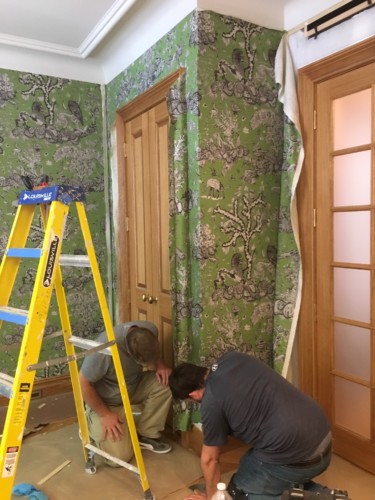
Eric’s craftsmanship is on par with some of the work of the finest craftsmen I have worked with. He is on par with Robert Kelly (complex wallpaper installation) Jay Swift (stone fabrication) and others I have written about in the past, in a blog post, “Local Talent for a World Class Design.” These experts share an unusual dedication to their craft, which is increasingly rare and harder to find. Skilled upholsterers, carpet installers, tile setters, plasterers, stone fabricators, painters — once so readily available — are now harder to find. When I need one and discover one, I consider them as I would a valued client! In such professional circles I have never once encountered a prima donna.
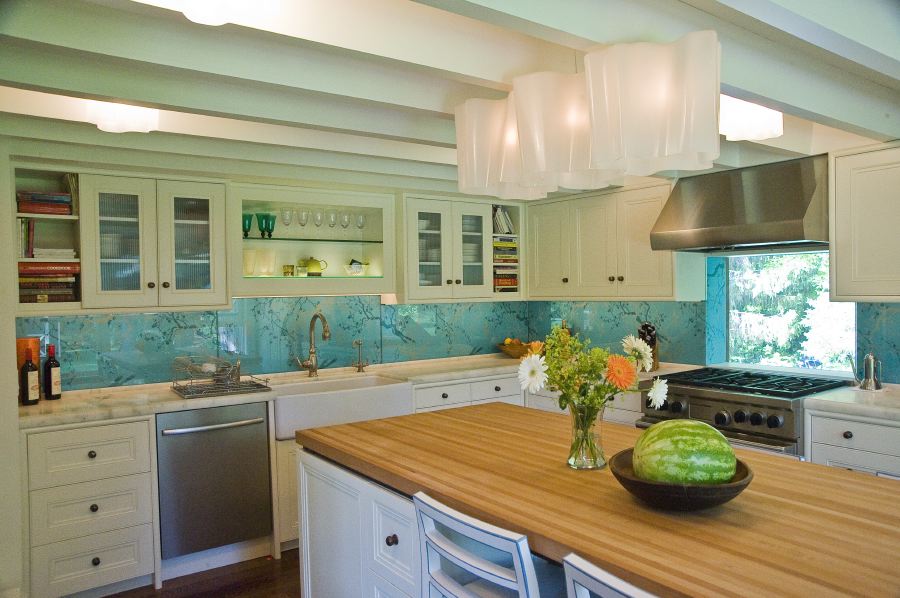
The client wanted to use fabric from her living room upholstery as a kitchen backsplash. Using tempered glass as well, we made it work!
Most any fabric works on walls, though ultra-suede silk can present a challenge. Anything else will work easily, and the bigger and more complex the pattern the better.
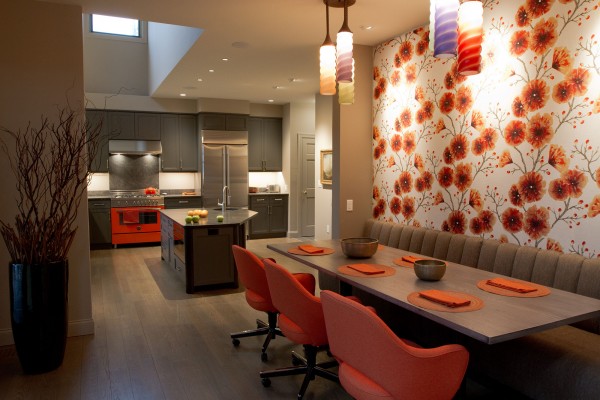
This bright fabric wall lightens up the dining area with poppies.
The acoustical benefits of fabric-covered walls — a soft hush — is appealing. Fabric walls, with their noise-reducing coefficient, offer the sensation of entering a restful cocoon. Bedrooms are ideal for wall upholstery, as are libraries or studies.
Fabric offers a tactile experience that wallpaper does not. Even without touching the material, it conveys depth and smoothness since it is stretched across the surface, floating in a perfect plane. Personally, I like to first apply a very thin cotton or dacron pad without a visible slope back to the edges.
Watch this video of various wallcovering options, including cowhide, birch veneer and upholstery fabric!
If upholstering the walls sounds too good to be true, and too expensive to afford, it’s not! In fact, I have used wall upholstery to save money on projects. With the right wall-coverings, you can hide the worst wall flaws imaginable. In our retail store, Linen, the walls were a mess and would have required hours of prep and resurfacing in order to paint. But upholstering the walls over ¼” dacron, we covered it all up and wound up with a perfect high-end finished product. Voila!
So when considering wall coverings, include upholstery in your possibilities list, especially in an older home with imperfect walls.


